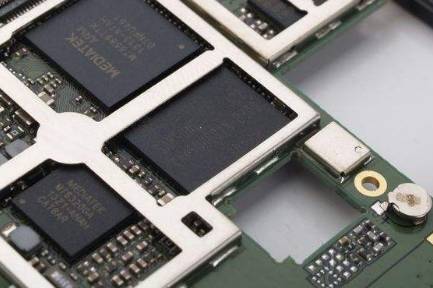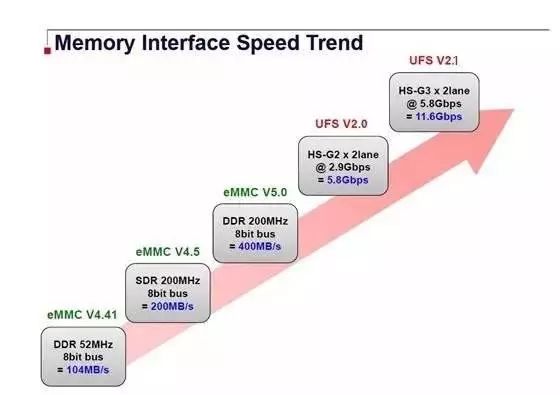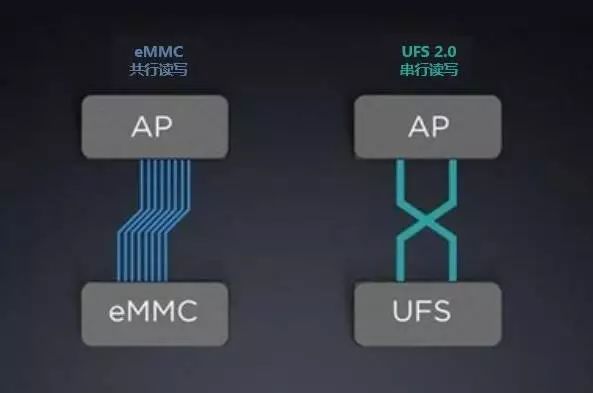

Follow Hardware · Smart Consumption | Welcome to follow Master Titanium
Cover Image: This is so boring, it must be the British! →_→ (1.9MB)
Recently, since the flash memory mixing incident of a certain domestic brand, more and more ordinary consumers have begun to pay attention to the details of smartphone configurations beyond just the processor and memory, as these aspects significantly affect the actual speed. In fact, every component of a smartphone can influence the overall experience. Today, let’s discuss the meanings behind the terms UFS, eMMC 5.1, and LPDDR4 that were mentioned during the flash memory mixing incident, which represent important performance indicators for smartphones.
The Importance of Science Popularization
To be honest, while most friends can distinguish between flash memory and RAM in terms of “capacity”, I believe 99% still do not understand the functional differences between these two types of memory. So let me explain.

First, let’s talk about RAM. Mobile RAM (Random Access Memory) is an internal storage device that frequently exchanges data with the CPU. Its main purpose is to ensure fast read and write operations at any time. Typically, it serves as a temporary data medium connecting the operating system and applications, mainly used for storing programs that are used for a short period of time. So before you rush to compare your RAM, let’s first understand what it actually does. Due to considerations such as power consumption and speed, mobile devices primarily use LPDDR RAM, which can provide high performance while effectively reducing energy consumption, making it a good solution.
Next, let’s discuss flash memory. Flash memory is essentially what everyone understands as a “storage device”. Because it retains data even when power is lost, it has become increasingly familiar to many people due to the popularity of SSDs. Simply put, you can think of it as the hard drive in a PC. When the RAM loses power, you still need a device to retain data long-term, making it a crucial component. The actual running speed of this device will provide the most noticeable experience during use.

When you start criticizing an old device for being slow, the outdated flash memory is usually to blame. This is also one of the reasons why the flash memory mixing issue has gained traction.
Now Let’s Talk About What You Care About
Leaving aside the NVMe that Apple started using from the iPhone 6s, today we will focus on the two flash memory standards: eMMC and UFS.
First, let’s discuss eMMC, which stands for “embedded Multi Media Card”. It was originally defined by the MMC Association. Its primary purpose is to serve as a standard specification for embedded storage in smartphones, tablets, and other smart devices. In simpler terms, it means that a controller (control chip) is added to the storage device selected by manufacturers, which is then uniformly packaged with a standard interface reserved for downstream manufacturers to use directly. Before 2015, this was the storage medium used by all mainstream smartphones and tablets.
The New Generation Surpasses the Old
In 2011, the Joint Electron Device Engineering Council released the first generation of Universal Flash Storage (UFS) standard, which is the predecessor of UFS 2.0. However, the first generation of UFS was not popular and did not have a significant impact on the eMMC standard, as eMMC was still very strong at that time. This was partly due to the fact that the actual performance of eMMC had reached its limits.
Although the early first generation of UFS did not significantly affect the eMMC standard, its iterative upgrades began to attract the attention of more manufacturers during the UFS 2.0 period. The impressive read and write speeds made eMMC look inferior and it gradually began to replace eMMC in the high-end market, becoming the mainstream specification for mobile devices.

In fact, UFS 2.0 has two versions, one of which is HS-G2, which is the current UFS 2.0. The other version is HS-G3, also known as UFS 2.1, which can reach data read speeds of 1.5G/s, twice that of UFS 2.0. This is naturally the mainstream choice for flagship products from major manufacturers.
What Are the Differences Between These Two?
We cannot start from the relationship between humans and the universe, so I will introduce the differences in a comparative manner. UFS 2.0 represents a brand new standard in flash memory specifications. So what are the differences between UFS and eMMC? The difference lies in that UFS 2.0 adopts a new standard, and because it supports serial read and write operations, it allows for more efficient usage. Unlike eMMC, which requires separate read and write operations, UFS can perform both simultaneously, which you can probably understand. Oh, and it also supports command queuing. 
Therefore, compared to eMMC, which requires separate read and write processes, UFS has already lost a significant portion of speed and efficiency. Given that UFS chips have faster transfer speeds and lower power consumption, they are naturally qualified to become the strongest pairing for high-end and mid-range smartphones in the future.
LPDDRx Is Like This
LPDDR is a communication standard formulated by the JEDEC Solid State Technology Association for low-power memory, known for its low power consumption and small size, specifically designed for mobile electronic products. The characteristics of LPDDR are that its operating voltage is much lower than the standard voltage of DDR, so from the first generation of LPDDR to the latest LPDDR4x, each generation upgrade has doubled the internal read size and external transfer speed.
The latest LPDDR4X is similar to LPDDR4, but it saves additional power by lowering the I/O voltage to 0.6 V instead of 1.1 V, achieving better energy efficiency.
Now you have a more intuitive understanding of why the flash memory mixing issue is so important, right?

Previous Highlights:
For 24.9, You Can Use M.2 SSD!!
Want a CPU That Can Handle Daily Tasks for 300 Yuan?
For Just 3 Yuan, Double Your Smartphone Experience!
The Real Reason Manufacturers Are Reluctant to Make Compact Flagships Is Here!Unveiling the True Reason Behind Bandwidth Limitations!
